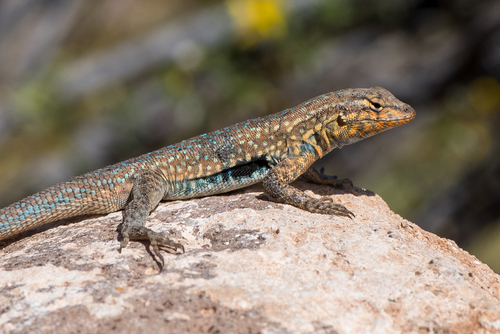
Common Side-blotched Lizard
The side-blotched lizard (Uta stansburiana) thrives in North America's arid landscapes. Notable for its colorful throats and strategic mating behaviors, it’s an adept insect hunter, showcasing nature's vivid adaptability and complexity in ecosystems.
3 years
Lifespan
Least Concern
Conservation Status
Stable
Population Trend
Distribution Range of the Common Side-blotched Lizard
Uta stansburiana, commonly known as the common side-blotched lizard, is native to the western United States, parts of Mexico, and regions extending into British Columbia, Canada. It is predominantly found throughout the southwestern United States, including states such as California, Nevada, Utah, New Mexico, and Arizona.
Common Side-blotched Lizard's Habitat
Environmental Conditions
The common side-blotched lizard typically inhabits arid and semi-arid environments. These habitats include deserts, grasslands, chaparral, and woodlands. The climate in these areas is often characterized by hot, dry summers and mild, wet winters, although the lizard is highly adaptable to variations in these conditions.
Ecological Niche
Uta stansburiana occupies a versatile ecological niche, often residing in areas with loose soil and abundant ground cover, such as rocks and vegetation, which provide both shelter from predators and opportunities for thermoregulation. The lizard is primarily insectivorous but may also consume plant matter and other small invertebrates. Its varied diet and adaptability make it a key component of the food web in its native habitats.
Copyright @ Nature Style Limited. All Rights Reserved.
 English
English